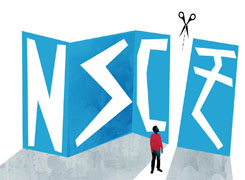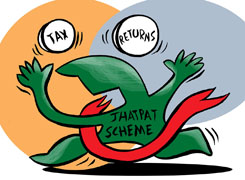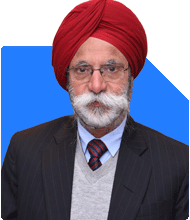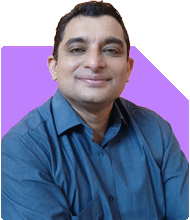Hi
My monthly in hand salary is 84k
My loans emi are more than 70 k
What to do
Ans: ? Understand the seriousness of your EMI burden
– Your EMI is more than Rs.70,000.
– Your take-home is Rs.84,000.
– This means more than 80% goes in repaying loans.
– This is a very high debt-to-income ratio.
– It leaves very little for your monthly needs.
– Saving and investing becomes almost impossible.
– This can affect your peace of mind and stability.
? Start with identifying the types of loans
– List all loans with EMI and balance.
– Note the interest rate and tenure for each.
– This includes personal loans, credit card dues, car loans, etc.
– Check which loan has the highest interest rate.
– This step gives full clarity on your debt structure.
? Avoid any new loans or expenses for now
– Don’t take more loans to handle current EMIs.
– That will only increase your burden.
– Avoid using credit cards for EMI or cash withdrawal.
– Stop or pause any high-cost spending.
– No gadgets, no travel, no luxury expenses.
? Build a basic household budget immediately
– Track every rupee of your monthly spending.
– Separate must-have expenses from avoidable ones.
– Rent, groceries, medicines, utilities – keep these.
– Remove online shopping, OTT, dining out, weekend trips.
– Live very simple for the next 12–18 months.
? Find options to reduce your EMI load
– Try negotiating lower interest rate with lender.
– Use balance transfer to reduce EMI.
– Banks give lower rate for good credit scores.
– Extend loan tenure to lower monthly EMI.
– This increases total interest, but gives relief now.
? Try part-prepayment of small loans
– If any loan has low balance, try prepaying it.
– Use bonus, PF loan, family support if needed.
– Start with highest interest loan.
– That will save more in long run.
? Explore debt consolidation with proper advice
– Sometimes combining loans into one can help.
– But only do this if interest rate is lower.
– You must study terms carefully.
– Don’t go for informal lenders or apps.
– Only use regulated NBFCs or banks.
? Emergency fund is missing – create it gradually
– With such tight cash flow, emergency fund is vital.
– You can’t handle job loss without it.
– Aim for Rs.25,000 to Rs.50,000 first.
– Slowly grow it to 3 months of EMI and needs.
– Park it in safe liquid instruments.
? Investment should be paused temporarily
– Right now your focus is loan reduction.
– Investments can wait for 6–12 months.
– Clear debt and build stability first.
– Later, you can invest for goals.
? Avoid insurance-linked investments
– If you hold any ULIP, endowment or money-back plans, exit now.
– These give poor returns and have high charges.
– They reduce your liquidity and flexibility.
– Shift to pure term plan for protection.
– Invest separately in mutual funds later.
? Surrender and re-invest policies if applicable
– If you have LIC or similar policy, review it.
– If it is not term insurance, check surrender value.
– Exit non-performing plans and reinvest in mutual funds.
– Mutual funds are flexible and goal-based.
? Resume investments once cash flow improves
– Start small SIPs only when your EMI is manageable.
– Use actively managed mutual funds for better returns.
– Index funds look cheap, but have limits.
– Index funds don’t beat the market.
– Active funds try to give better than average return.
? Why index funds are not suitable for your case
– Index funds follow market blindly.
– They do not adjust based on risk or time horizon.
– They may underperform during crashes.
– You need customised growth, not average returns.
– Active funds managed by experts offer more.
? Mutual fund route – regular plan with MFD and CFP
– Don’t go for direct funds on your own.
– Direct funds give no hand-holding or guidance.
– Choosing wrong fund can cause loss.
– MFD + CFP can guide based on your goals.
– They help monitor and rebalance regularly.
? Focus on income stability and skill improvement
– Parallel to loan control, work on job stability.
– Upgrade skills in your domain.
– Learn tools, certifications or soft skills.
– Job loss or salary cut can worsen your loan problem.
– Keep improving yourself every 6 months.
? Plan for goals once loans are under control
– After 1–2 years, plan for these goals:
– Emergency fund
– Child education
– Retirement
– Home down payment (only if within budget)
– Prioritise retirement even if child is small.
– Don’t depend on property or pension in future.
? Always protect your family with insurance
– Term insurance is needed if you have dependents.
– Rs.50L to Rs.1Cr cover is ideal.
– Premium is low and benefit is high.
– Also, get health insurance for entire family.
– Don’t rely on company medical policy alone.
? Don't panic or lose confidence
– Many people face such debt situations.
– It’s a phase, not the end.
– Proper budgeting and planning can solve it.
– Stay disciplined and committed.
– One year of effort can change everything.
? Create a 3-step action plan from today
– Step 1: Review all EMIs and spending.
– Step 2: Try restructuring or partial prepayment.
– Step 3: Build emergency fund and resume SIP later.
? Stay away from high-risk or quick return plans
– Avoid crypto, trading, Ponzi apps or get-rich schemes.
– You can’t solve debt through speculation.
– Safety and liquidity matter more now.
? Keep reviewing your plan every 3 months
– Sit with a Certified Financial Planner regularly.
– Share updates and revise your goals.
– Consistency in execution is more important than speed.
– Financial freedom takes time but is possible.
? Finally
– Focus now is on survival and regaining balance.
– Once done, you can restart your investment journey.
– With planning and patience, you can still build wealth.
– You already took the first step by asking.
– Take action now, even if small.
Best Regards,
K. Ramalingam, MBA, CFP,
Chief Financial Planner,
www.holisticinvestment.in
https://www.youtube.com/@HolisticInvestment


























